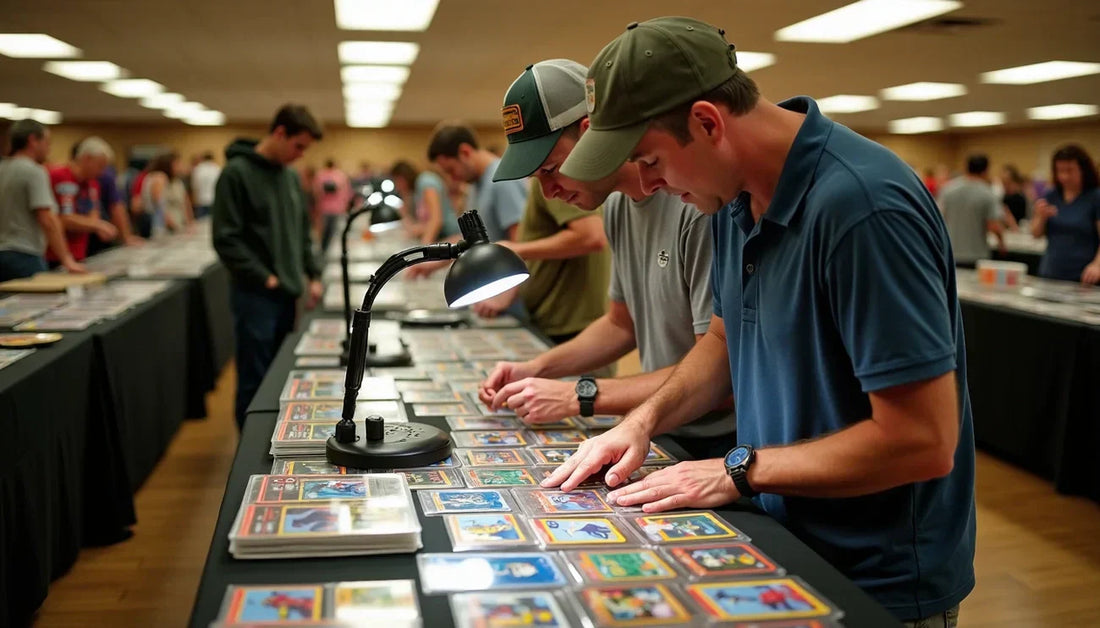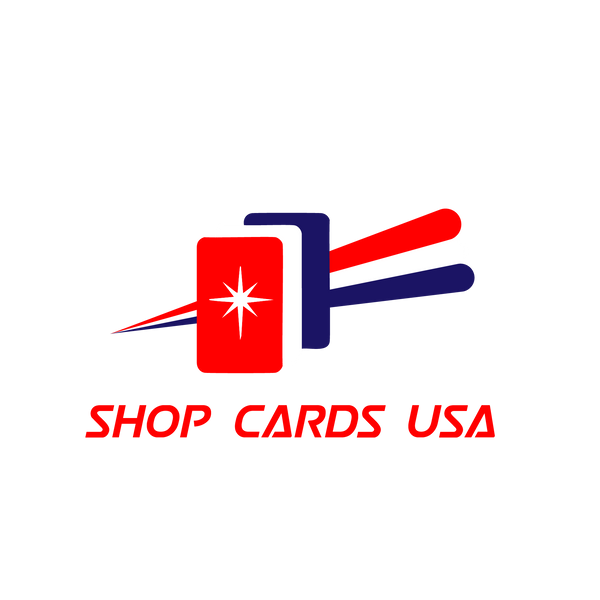
What Is a Card Show? A Beginner's Guide to Finding Hidden Gems (2025)
Card shows act as the core of the hobby bringing together collectors and sellers in energetic spaces full of activity. These gatherings let fans meet others, swap cards, and bond over the passion that fuels their interest. Hundreds of vendors display thousands of rare cards making these shows a top destination to discover the most sought-after items.
Local card shows provide more than spaces to buy and sell cards. They hold an important place in the world of collecting. Many seasoned collectors join over 20 local shows each year because of their enduring excitement. They are not only places for veterans, but allow new hobbyists to connect with others in the community.
Beginners can find real excitement in searching for hidden treasures. Many collectors head straight to dollar boxes—tables packed with affordable cards that could hide overlooked gems. This piece explains everything new collectors should know to navigate card shows and discover those special finds that make the experience worthwhile.
What’s a card show, and what makes people go to them?
Card shows connect collectors and dealers to buy, sell, or trade cards. Every year, these events take place in various cities across the United States, with thousands occurring. Events range from small gatherings in local areas to massive conventions that attract tons of card fans.
Different kinds of card shows: local versus national
Local card shows feel more personal. They involve a smaller number of collectors and sellers from the area. The National Sports Collectors Convention known as the NSCC, takes things to an different scale. It fills a gigantic 500,000 square feet of space and hosts over 600 sellers. Local ones happen more often and pop up all across communities. In contrast big events like "The National" rotate between major cities to make it easier for collectors to attend.
What is a sports card show vs a trading card show?
Sports card events highlight collectibles ranging from old-school baseball cards to newer basketball rookie cards. These shows let fans meet athletes and collect autographs during the events. Trading card conventions also showcase items outside of sports, like trading card games. Larger conventions often combine both hobbies setting up sections to display TCGs and pop culture items alongside classic sports cards.
What is a Pokémon card show?

Pokémon card events focus on the popular Japanese franchise. One example is Card Party, which features 250 vendor tables live stage programs, and opportunities to meet creators and influencers. These shows act as spots where fans can trade, join tournaments, and attend panels to learn.
Who attends and what to expect?
Card shows attract both casual hobbyists and dedicated investors. People see everything from cheap dollar bins to unique high-value collectibles. Some shows bring in experts for authentication, booths from card makers, and even representatives from auction houses. The energy grows as collectors swap stories and advice while hunting for their next big find.
The hidden value of local card shows
Local card shows offer distinct benefits that experienced collectors have recognized for a long time. These intimate gatherings provide a friendly setting making it simpler to find great deals and build connections than you would at larger events.
Why smaller shows can be better for collectors
Local card shows give collectors amazing chances to browse huge collections and find hidden treasures. These smaller gatherings usually have dealers who offer special discounts and show-only deals, unlike national events. The lower foot traffic at local shows—especially at tables far from the entrance—lets you take your time to search without feeling pressured. Most collectors love the dollar boxes and value bins (usually priced $1-$10) because dealers who buy these in bulk might not have updated their prices to match current market values.
Stories of rare finds and unexpected deals
The excitement of surprise finds keeps drawing collectors to local shows. A collector recently found five 1995 Donruss Hit List cards with similar serial numbers #11/10,000 in cheaper bins—a super rare find. Another collector pointed out a useful tip: "If you see a lot of people crowded around one table going through all the dollar bins, that often means there's deals in those dollar bins".
Building relationships with local dealers

The dealer connections you make are probably the best part of local shows. These relationships lead to great finds, shared discoveries, and access to special cards you won't easily find elsewhere. Trust and good communication are vital to encourage these connections. One seasoned dealer put it well: "The relationships are key. That's what business is about. It's not always about winning. It's about balance". Collectors who spend time building good relationships with dealers often get access to exclusive deals, first picks of new inventory, and valuable insider tips.
How to prepare for your first card show
Good prep and planning lay the groundwork for an awesome card show experience. First-timers can get the best out of their visit and money by using tried-and-true tips.
Set a budget and bring cash
A clear budget is everything in card show preparation. Most experienced collectors suggest you leave credit cards at home and stick to cash to keep spending in check. Dealers prefer cash payments at most shows because transactions move faster and often lead to better deals. You'll want a mix of small and large bills to help with vendor negotiations. The best part about cash transactions is saving money since dealers rarely charge sales tax.
Research card values ahead of time

Market values research should happen before you step into a show. Quick value checks become easy when you have comparison tools like eBay or 130point.com ready on your phone. Additionally, by wish listing some of your target cards you can easily put yourself in better positions when you conduct any negotiations. Make sure if possible to have multiple sources or sites available as pricing can change between them.
Organize your cards if you plan to trade
Trading cards need proper organization. The quickest way to prepare is sorting your collection by category, set, card number, or type before the show. Sellers should create separate displays based on value ranges. A well-organized system makes negotiations smoother and helps you find specific cards quickly.
What to pack: supplies, cases, and sleeves
You'll need more than just cards and cash. Penny sleeves and top loaders are must-haves to protect your new purchases. Your collection stays safe in a backpack or dedicated card case during transport. You'll also want to pack a few snacks, water, and wear comfortable shoes as you will likely walk quite a bit at these types of events.
Tips for finding hidden gems at a card show
Finding hidden gems at card shows takes both strategy and patience. Experienced collectors have learned to spot special cards that others miss.
Start with the dollar boxes
Dollar boxes are a rich source of gems that are worth a lot more than their price tag. These value bins usually have cards priced between $1-$10, which dealers bought in bulk without updating to current market values. Smart collectors head straight to these boxes when the doors open because they offer the best return on investment.
Look for undervalued raw cards

Raw (ungraded) cards create excellent opportunities, especially with vintage items. Card shows let you check cards in person instead of just seeing online photos. A thorough check of corners, edges, and surfaces helps spot flaws before buying.
Ask questions and talk with dealers
Dealers usually keep some inventory hidden from their display tables. Good relationships with vendors can lead to special deals and access to their hidden stock. Getting their contact details helps you stay connected after the show.
Check for cards outside your focus area
Looking beyond your main interests often leads to surprise finds. Collectors often find valuable cards in areas they hadn't thought about before.
Timing matters: early vs late in the day
Day one visitors get the best card selection, while last-day shoppers usually get better prices. Most dealers cut prices heavily on the final day because they don't want to take inventory back home.
Conclusion
Card shows provide collectors with many chances, no matter if they’re beginners or have been involved for a long time. These lively events serve as the core of the hobby. They unite fans through their mutual love for collecting. Attending local shows makes it easier to discover surprises at low prices. These events also offer a way to create strong ties with dealers and other collectors.
Good preparation makes a huge difference at your first show. You should set a strict cash budget and research current market values. Bringing the right supplies will improve your experience by a lot. Any collector can direct themselves through busy aisles confidently with the right knowledge and strategy.
The search for hidden treasures is the most exciting part of any card show. Dollar boxes need special attention because these simple containers often hide valuable cards that others miss. Raw cards also offer great opportunities if you take time to check their condition carefully.
New collectors should know that card shows are more than just places to buy and sell. They create communities where knowledge and connections happen naturally. Experienced collectors understand this well and attend dozens of shows every year. The relationships you build at these events become as valuable as the cards. They lead to exclusive deals and insider tips later.
Card shows honor everything great about collecting. The thrill of discovering the ideal card after hunting for hours feels amazing. Finishing a challenging set fills you with pride and excitement.
